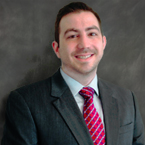One of the tenants of wise-investing – and indeed in one’s approach to life – is to “not put all your eggs in one basket.” The last few years give us a clear example of the dangers that exist when one’s portfolio is too heavily in concentrated in any one asset; look at the dramatic shift in prices seen in stocks, precious metals, and real estate! With the volatility and uncertainty currently displayed in many conventional investments, astute investors are actively looking for ways to protect themselves by diversifying their holdings and bringing in assets that offer non-correlation to their existing positions.
“Non-correlating assets” has become the buzz term after the most recent recession. This is not a new concept, but after the financial crisis in 2007 investors have become cognizant of this. To many people the idea of investing in rare coins is a new concept, but it is, in fact, a time-tested method for preserving wealth generationally. Owning assets that are limited in supply and carry a high demand due to their intrinsic value is a strategy historically shown to protect and grow wealth. Many investors understand this strategy as they have seen it throughout their lives without realizing it. Imagine purchasing a Picasso, Monet, 1955 Ferrari, or downtown property in most urban areas 30 or 40 years ago! The new thing about investing in rare coins is that individuals now have a trusted ally in this space.
RCW works directly with private investors by making portfolio recommendations, acting as a broker, and professionally managing an actively traded individual coin fund thereby allowing investors to be successful without needing an extensive knowledge of the coin world. The following article from the New York Times in 1981 explores rare coin investments that Yale University and Johns Hopkins University made at the time including ownership – and record setting sale – of a 1787 Brasher Doubloon. RCW later purchased the “Unique” Brasher Doubloon in January of 2005 for $2.99 million. It was sold to a Wall Street investment firm in December 2011 for $7.395 million – a 247% return over 7 years. As you will, even universities with sizable endowments and an unlimited number of investment options have recognized the importance of spreading money around as well as the benefits of owning rare coins.
When an investor has the ability to “hold” something extremely rare – and highly desirable – off the market for a period of time they put themselves in a powerful position when they decide to sell. It does not matter how much money a buyer has if he cannot find a willing seller with the item. http://www.nytimes.com/1981/01/04/nyregion/yale-to-sell-brasher-doubloon-to-help-finance-university-s-new-library.html Don’t forget to put your “eggs” into multiple baskets. There is a great opportunity with rare coins; please contact one of our professionals to find out how bringing in this non-correlated asset can benefit your portfolio.


